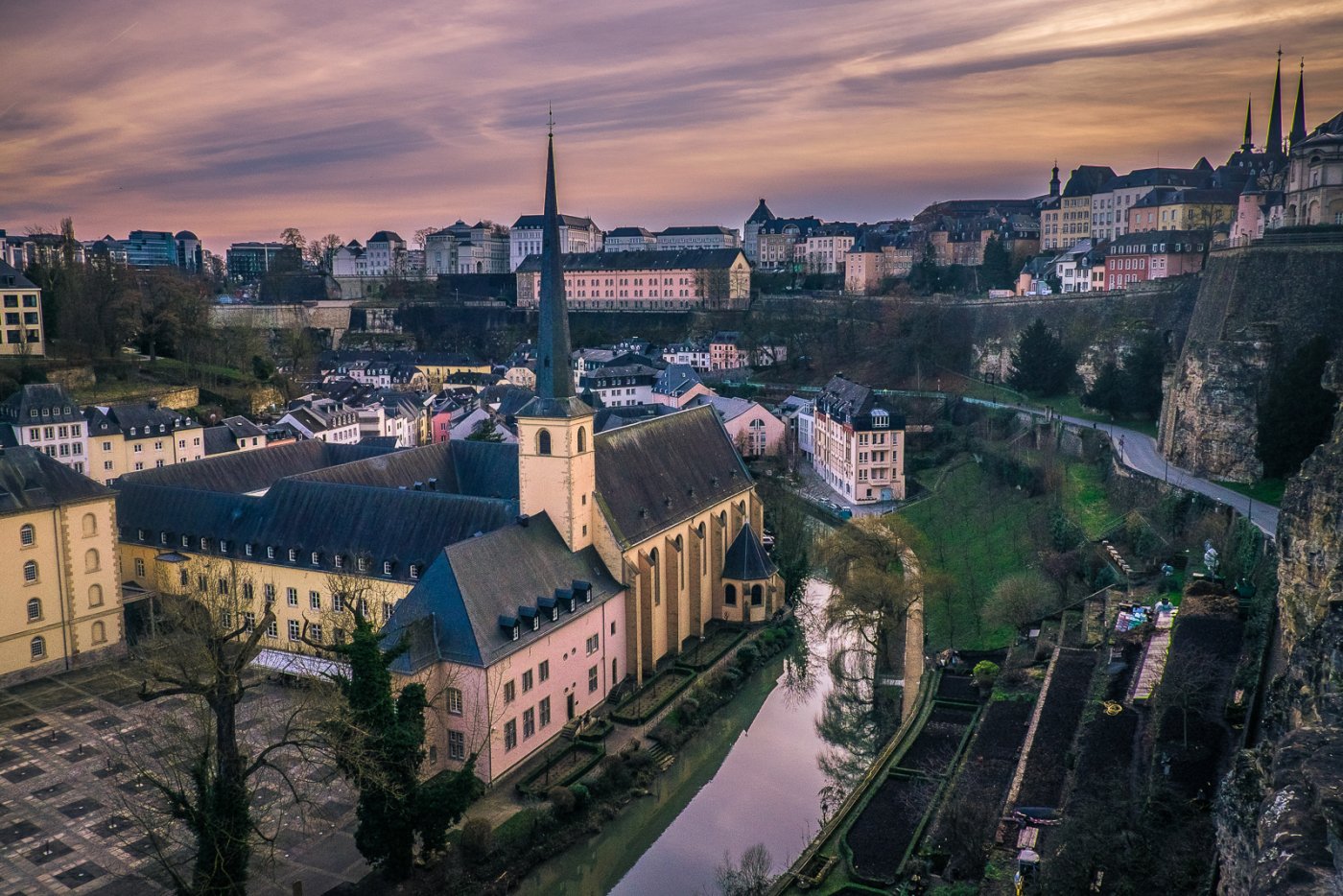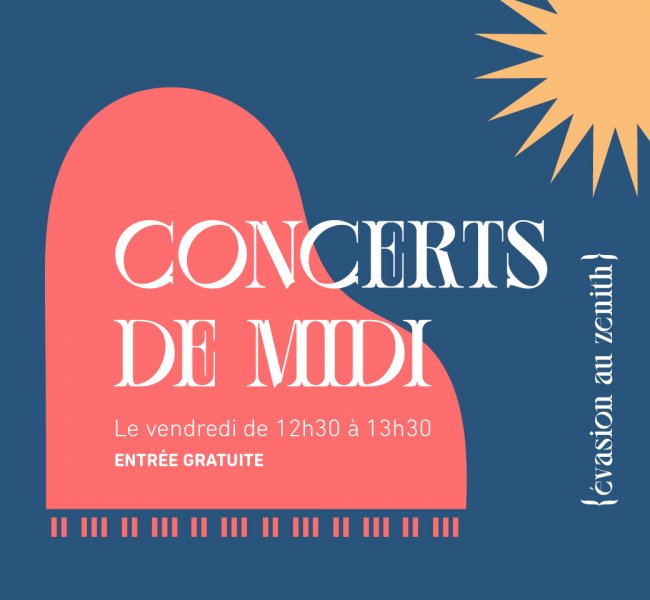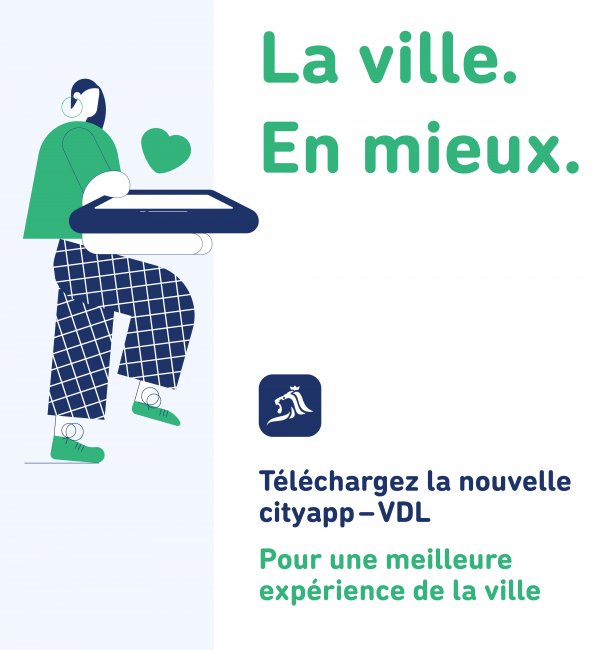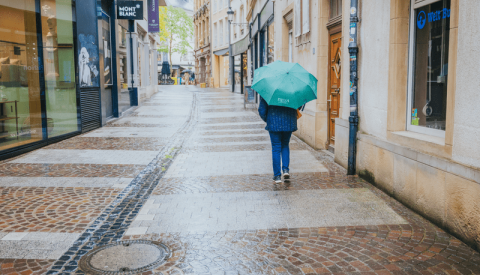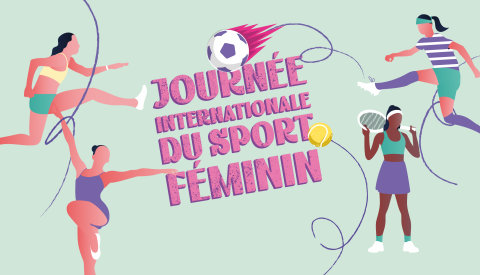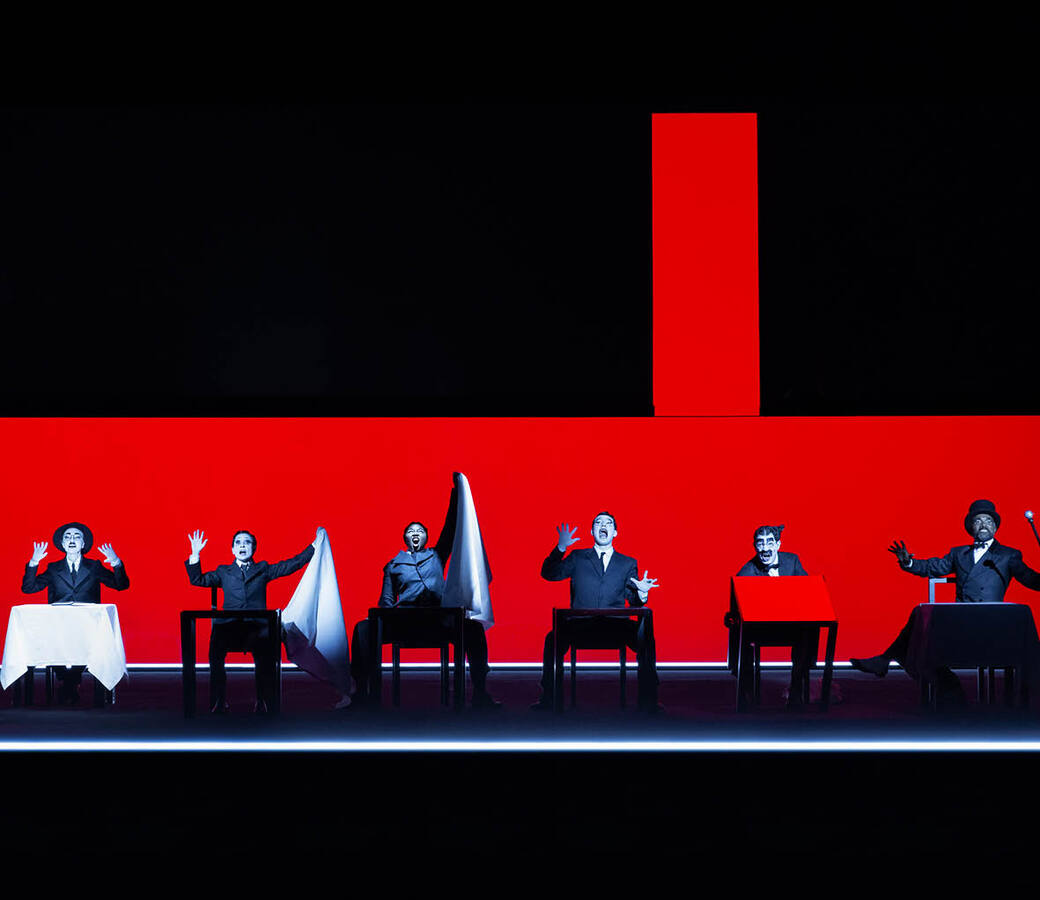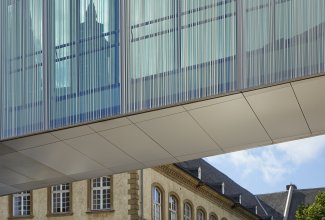"Espace en flux² "
From mid-July 2025 until the venue is repurposed, "Espace en flux" – a project that blends history and design – will be on display in the Gare district's most emblematic building, located at 15, rue de Strasbourg. The windows of this currently vacant building have been decorated with illustrations by designer Ruth Lorang, retracing the rich history of this building, which has successively housed the "Sporting Club", the "Hôtel Sporting", the "Whisky à gogo" nightclub, and the "le Coral" and "Marionnette" brasseries. Interested passers-by and history buffs can learn more about the building through texts by historian Robert L. Philippart.
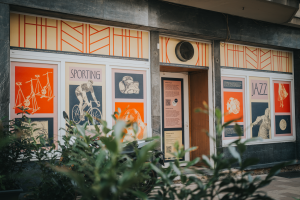
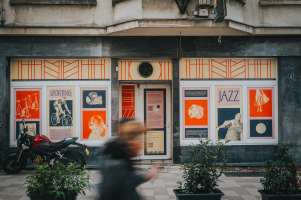
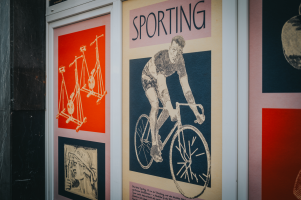
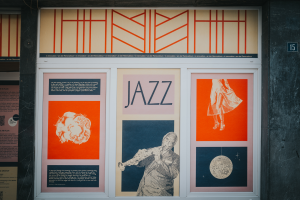
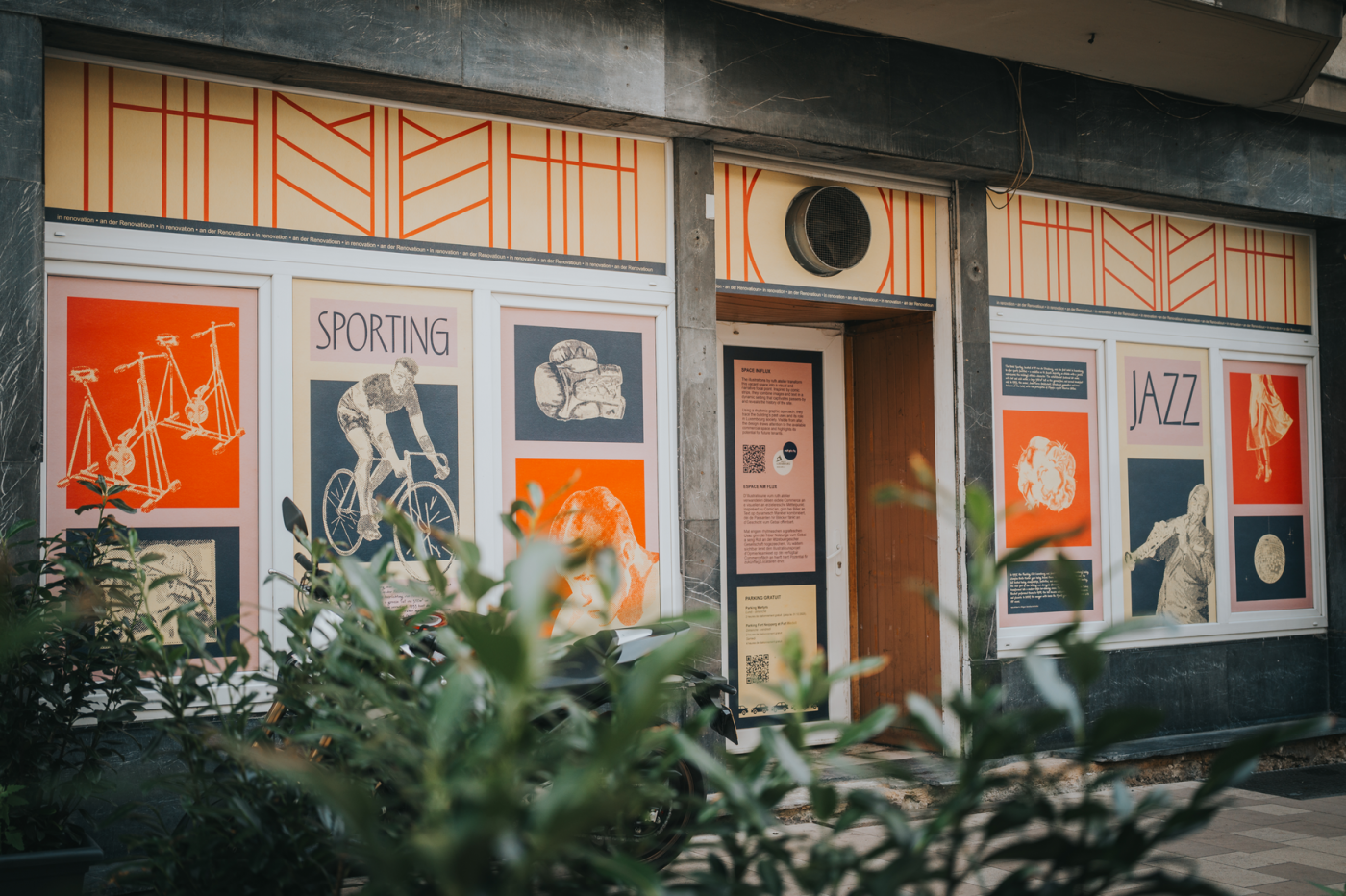
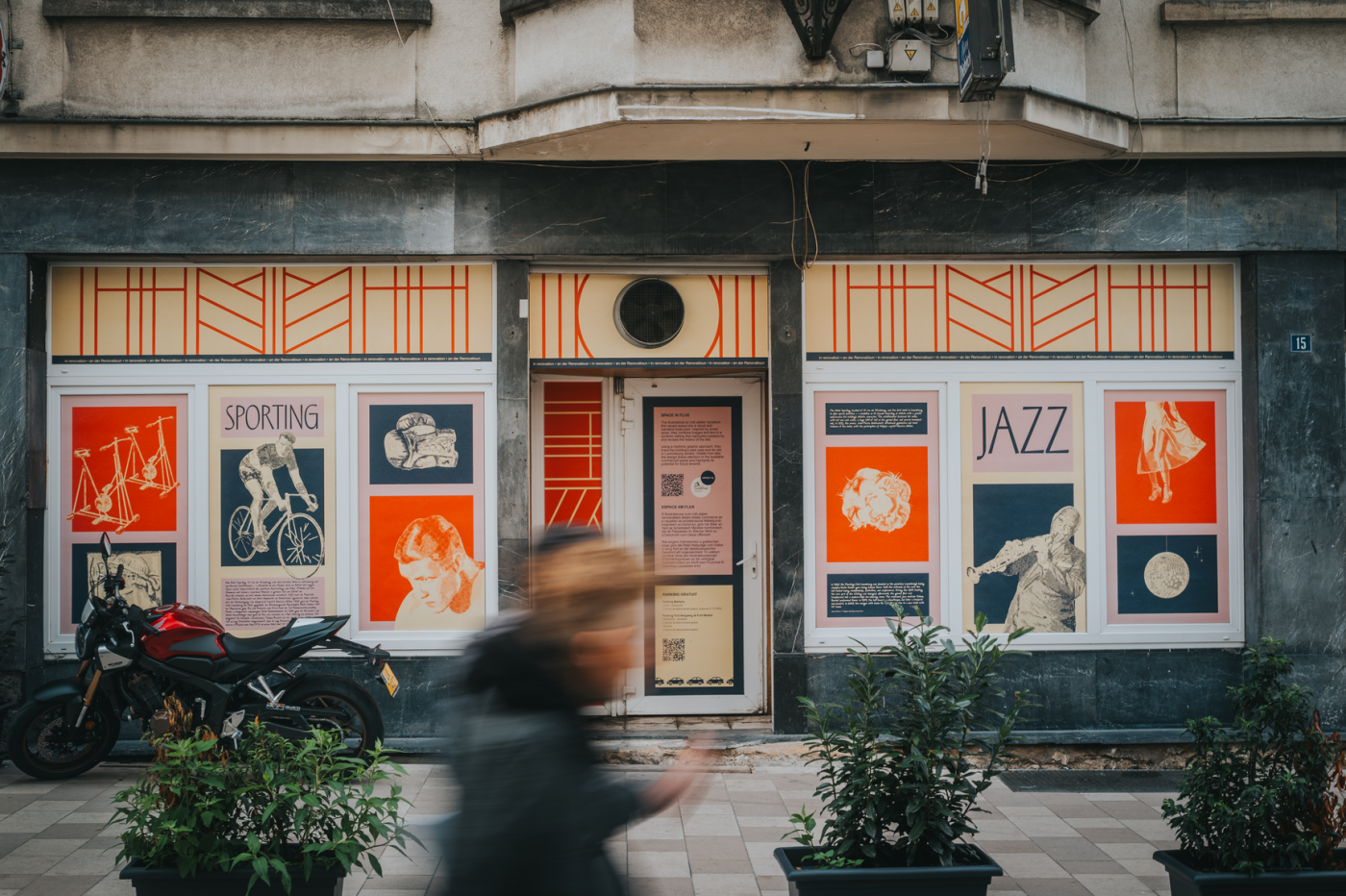
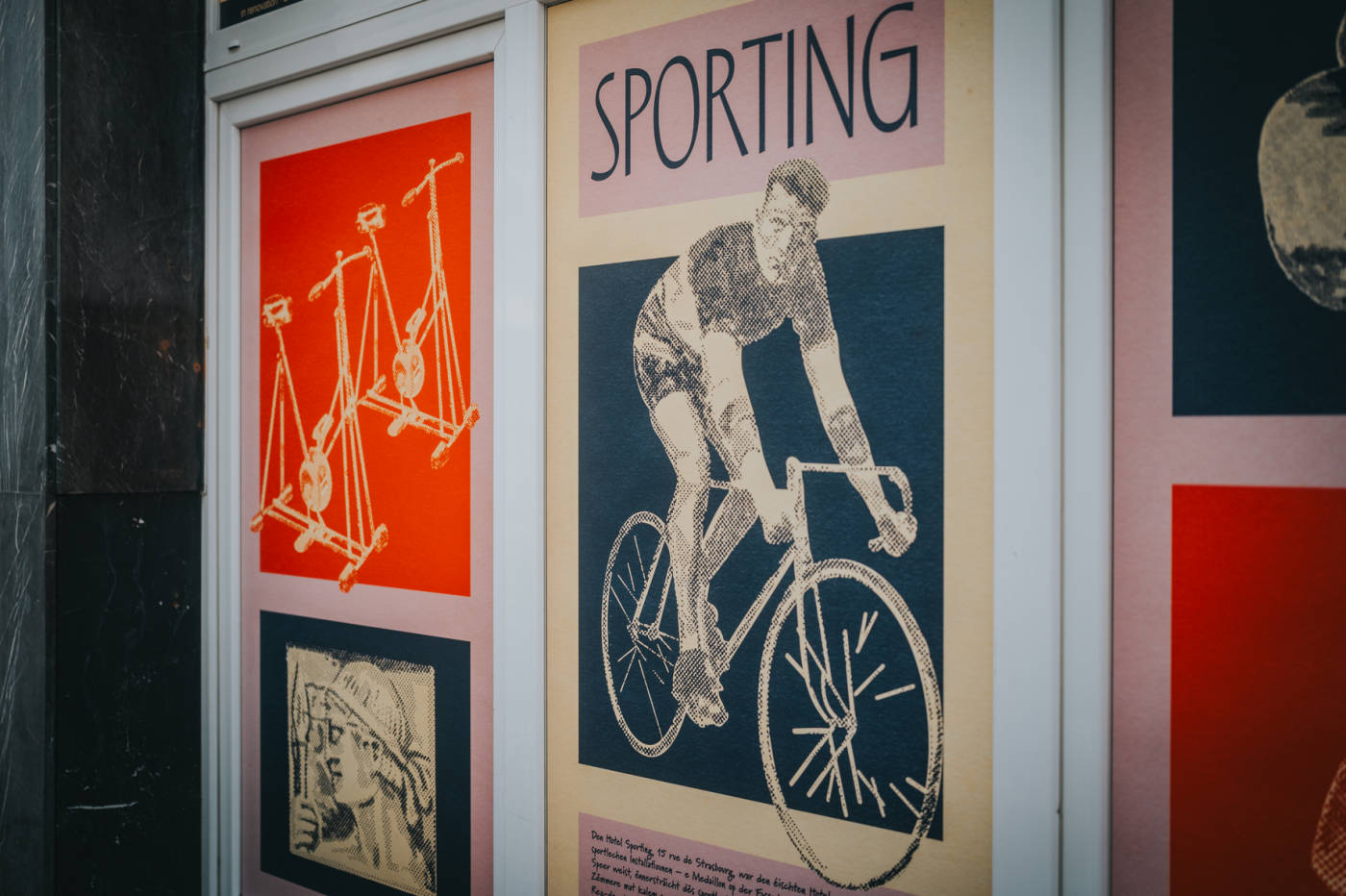
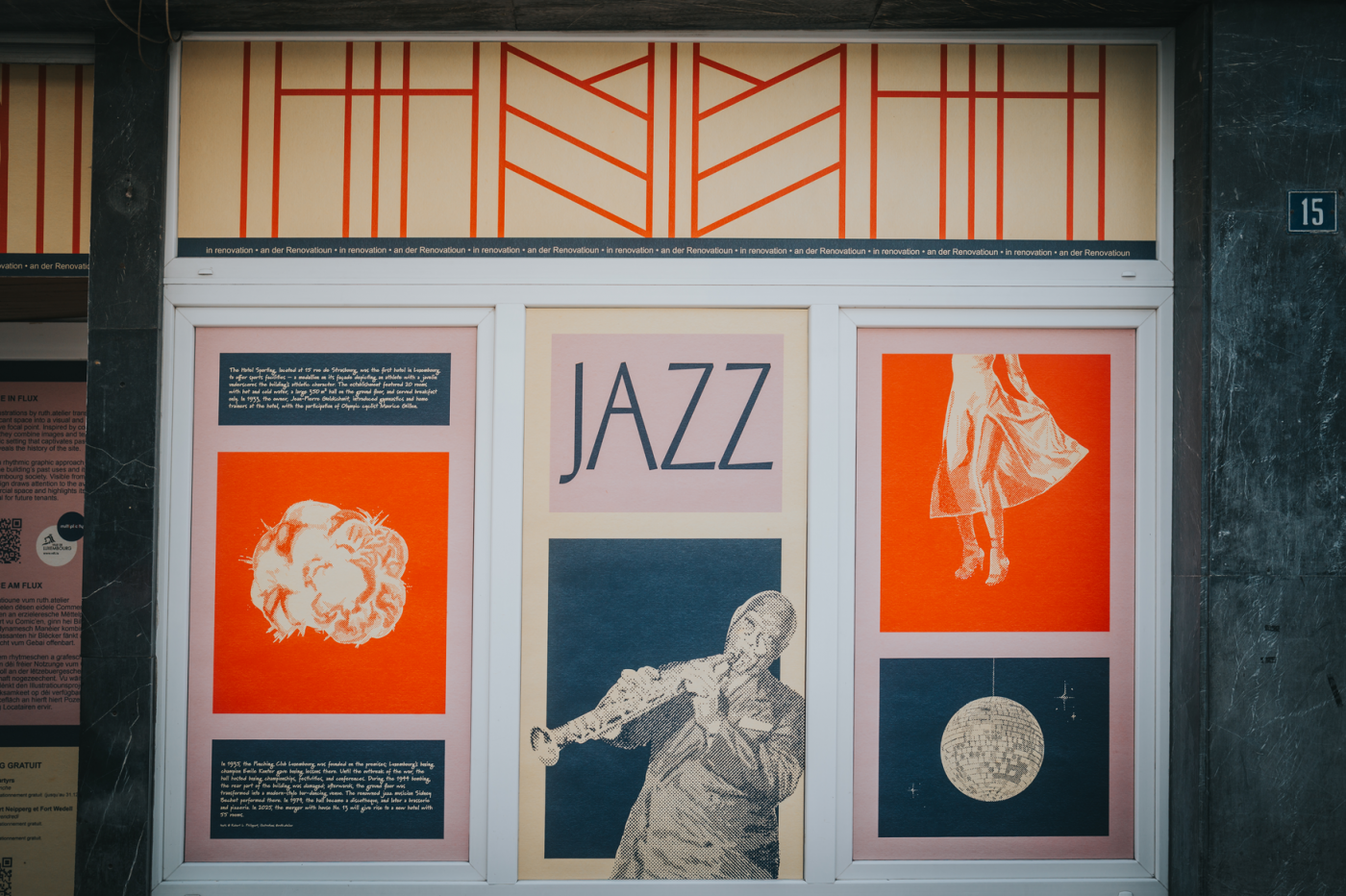
Le Sporting
The Hôtel Sporting was the first hotel in Luxembourg that had sports facilities.
Sport as a group practice gained popularity in the second half of the 19th century. This growth was closely tied to the ideas about health and education that were being developed held at the time. The first modern Summer Olympics were held in 1896, and the first Winter Olympics in 1924.
The emergence of sport as a social phenomenon
The "Sporting Club de Luxembourg", which was founded in 1908, popularised athletic sports among Luxembourg's youth, and sought to promote and encourage residents to appreciate the value of sports in general. Several football clubs also took on the name "Sporting". In 1920, the "Sporting Palace" started putting on athletics and wrestling events during the Schueberfouer. In 1926, the "Sporting Palace", a shop specialising in athletic wear, opened on Boulevard du Viaduc (now called Boulevard F. D. Roosevelt). It closed in 1929. In 1911, the "Sporting Club Luxembourg" held its first boxing evening at the Hôtel de Cologne on Avenue de la Porte Neuve. The City of Luxembourg Weightlifting League (Ligue de la Ville de Luxembourg des Poids-haltères) was founded in 1924, and shows featuring various combat sports debuted at the "Hôtel des Postes" (39, avenue de la Gare) later that same year. These matches were initially followed by a skit and a public dance, but were subsequently put on as stand-alone shows. The second Sporting Club de Luxembourg was founded in 1930, at the "Hôtel de la Poste". A gala evening, featuring national and international fights, was held to mark the occasion. After that, boxing galas, featuring professional boxers, were held at the venue.
Jean-Pierre Goldschmit, founder of the "Hôtel Sporting"
Starting in 1913, Adolphe Amberg's music hall, "Vieux Luxembourg", on Avenue de la Liberté, put on variety shows that often featured athletics and gymnastics. After World War I, interest in wrestling and boxing at the "Variété Amberg" grew. On 13 August 1917, Escher Tageblatt, writing about the "Variété Amberg" chalet at the Schueberfouer, remarked that, "a number of male members of the public, who have steeled their strength and muscles through hard labour, and have picked up some of the art of wrestling in their free time, come together daily at the Variété Amberg to fight each other for the 'Golden Belt of Luxemburg' until ten at night".
Jean-Pierre Goldschmit (1891–1965) was the director of "Variétés Amberg". He would go on to found the "Hôtel Sporting" on Rue de Strasbourg in 1932. After leaving Amberg in 1928, Goldschmit took over as manager of the "Hôtel Carlton" and "Le Perroquet" bar on Rue Dicks. In 1930, he was one of the founding members of the "Verein der Saalbesitzer von Stadt und Land", a professional union defending the interests of reception- and dance-hall owners.
In 1932, Jean-Pierre Goldschmit purchased the plot of land located at 15, rue de Strasbourg from Auguste Link, a colonial goods merchant on Rue des Bains.
The architectural style of the "Hôtel Sporting" is reminiscent of the buildings designed by Hubert Schumacher – the future government architect – when he was an architect in private practice. Schumacher designed the extension of Notre-Dame Cathedral in Luxembourg City, and would later become the architect of the Grand Ducal Court. An unsigned medallion depicting an athlete holding a javelin decorates the centre of the facade of the "Hôtel Sporting". This decorative feature reflects Goldschmit's view of the purpose of his business: javelin throwing is an athletic discipline. The javelin is an ancient symbol associated with warriors, hunting and ancient games. In a modern context, it symbolises strength, precision and discipline.
While it was being built, the upper part of Rue de Strasbourg was undergoing rapid development and becoming increasingly densely populated, what with the opening of several hotels and the administrative building of the Caisse nationale d'assurance maladie des ouvriers Luxembourg (Luxembourg National Health Insurance Fund for Labourers).
The "Hôtel Sporting" boasted 20 rooms with hot and cold water, bathrooms on the upper floor, and central heating. The hotel had no restaurant and served only breakfast. The ground floor housed a large room measuring 350 m2 that was used for different purposes over the years.
First sports hotel in Luxembourg
Jean-Pierre Goldschmit's sport-focused business was the first of its kind in Luxembourg. In 1933, patrons exercised to music played by the Florida Boys orchestra. The following year, the Sporting got home trainers and organised races on stationary bikes. "This facility, which is unique in this country, comprises 6 or even 18 bicycles of different colours. Above the cyclists is a large round circle with 6 indicators showing the distance covered by the individual cyclists", Luxemburger Wort reported on 7 December 1934. In 1934, Maurice Gillen (1894–1975) – the cycling champion who represented Luxembourg at the 1924 Olympics, and who would later coach Luxembourg cyclists for the 1936 Olympics – introduced the most modern home trainer on the market and organised in-house cycling races in the Sporting's large hall.
In January 1935 the "Punching Club Luxembourg" was established at the "Hôtel Sporting". The hotel's owner, Jean-Pierre Goldschmit, was both a founding member of this boxing association and a member of its board of directors. Boxing matches were subsequently moved from the Hôtel de la Poste to the Sporting. In 1936, Emile Konter (1911–1973) – the Luxembourg boxing champion who represented Luxembourg at international championships in Rotterdam, Vienna, Düsseldorf, Dortmund and Paris – ran boxing and fitness classes in the hall at the Sporting, which was equipped with "all the modern amenities along with hot and cold showers", as Luxemburger Wort reported on 18 January 1936. National and international boxing championships were held in the very same hall until just before the start of World War II. Georges Schiltz, a physical education instructor at the Athénée, who would later became an independent masseur, also gave boxing classes at the Sporting. In the years that followed, the Sporting was used as the venue for conventions and festive events by a number of organisations, including the Association d'assurance des chauffeurs de maison (chauffeurs' insurance association), the Automobile Club, the Luxembourg Athletics Federation and the volunteer fire-fighters.
Damaged during the bombardment
On 9 August 1944, the Allies' third air raid on the Luxembourg City train station, to repel the occupying forces, also damaged the back of the "Hôtel Sporting". When the time came to restore the building, Goldschmit seized the opportunity to make a number of alterations. For this task, Jean-Pierre Goldschmit engaged the architect Paul Dornseiffer. Dornseiffer (1902–1978) was an expert in property damage and was directly involved in the rebuilding efforts in the country. Dornseiffer is also known for building the "Brasserie Henri Funck" in Neudorf, the "Hôtel Esplanade" in Remich, and the extension of the former "École d'Artisans de l'État". He converted the ground floor into a bar and dance space with buffet dining and a "modern-style" bowling arena. The number of rooms was reduced to 14 so that more rooms could be fitted with private baths. Even after the alterations, the prices of the hotel rooms remained at the low end of the scale. After 1991, the hotel no longer appeared in the National Tourism Office's official hotel guide.
Sydney Bechet at the Sporting
A completely different type of event would flourish at the hotel when the "Dancing Sporting Club" opened. The establishment now hosted candlelight Viennese evenings on Thursdays, accordion evenings with the French composer Albert Souvignier, jazz concert evenings, and countless public dances organised by the capital's volunteer fire-fighters. The hall was used for family celebrations, general assembly meetings, and a few public auctions, and occasionally served as a venue for exhibitions of industrial cleaning machines, and for local fashion shows.
Especially notable among the jazz performances were those by the famous New Orleans saxophonist Sydney Bechet (1897–1959), who was accompanied by André Réwéliotty (1929–1962) and his French jazz orchestra. With more than a million albums sold, Bechet – who was generally accompanied by Réwéliotty – was one of the most celebrated musicians of the time.
A nightclub and then a brasserie
The managers – most of whom were women – changed frequently, as evidenced by the numerous announcements of reopenings. From 1976 to 1978, the ground floor was converted into a nightclub called "Whisky à gogo", which was renamed "Le bagatelle" in 1979. The company "Café Dancing Sporting" was wound up in 1988. From 1995 to 2015, 15, rue de Strasbourg was home to the "Le Coral" café-brasserie, and then from 2015 to 2024 it housed the brasserie and pizzeria "Marionnette".
